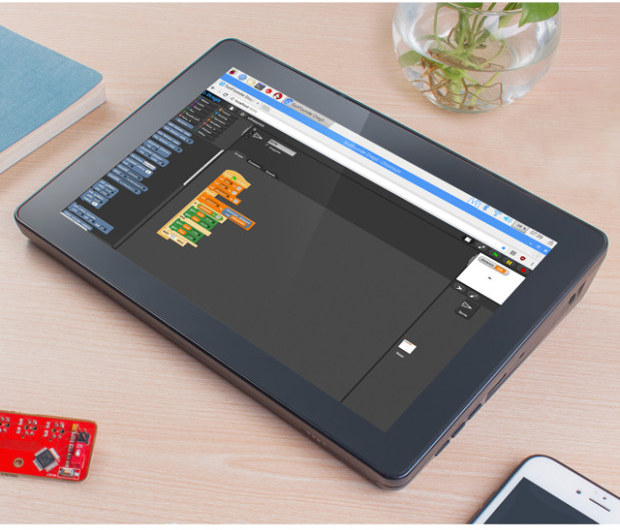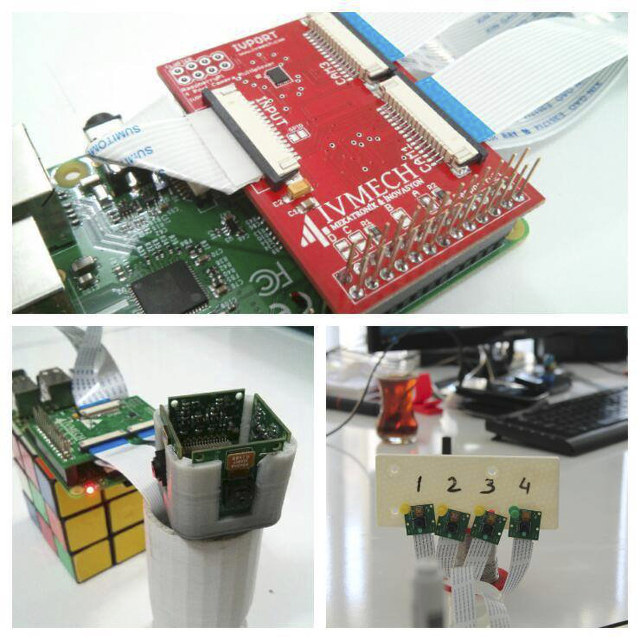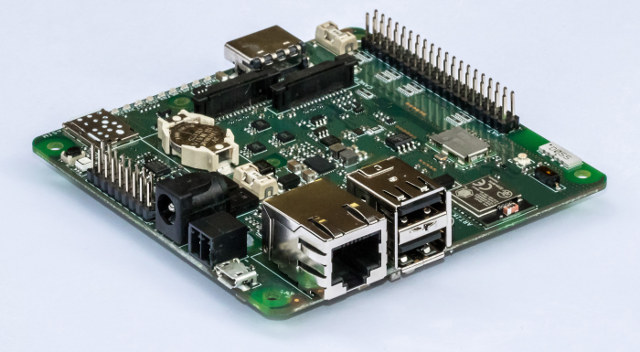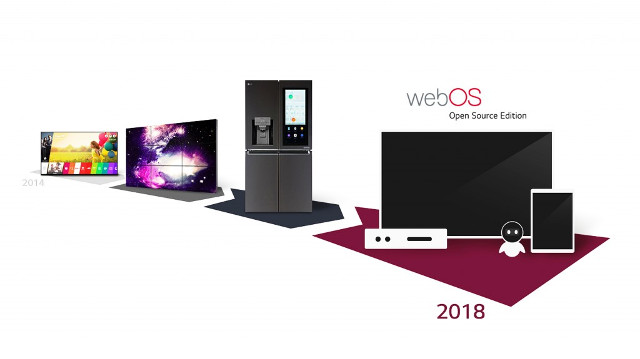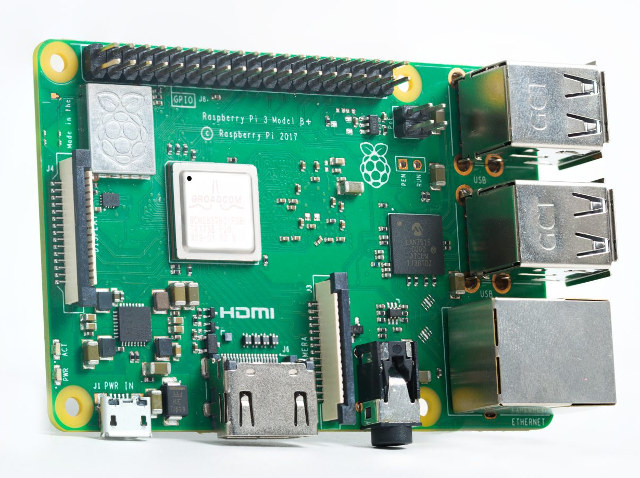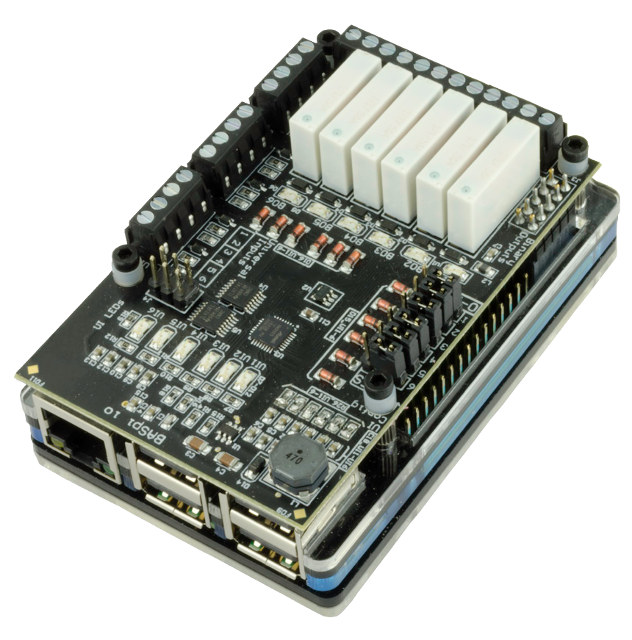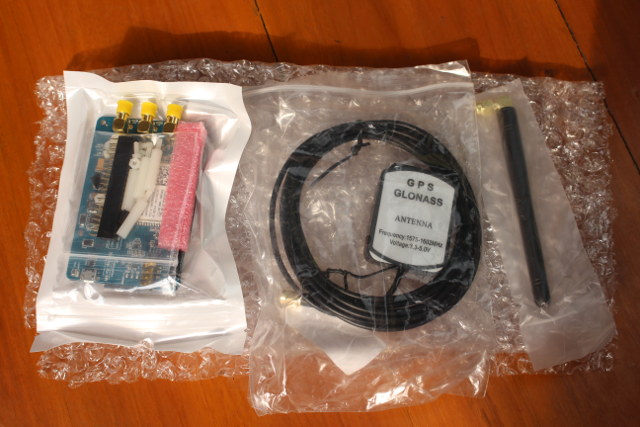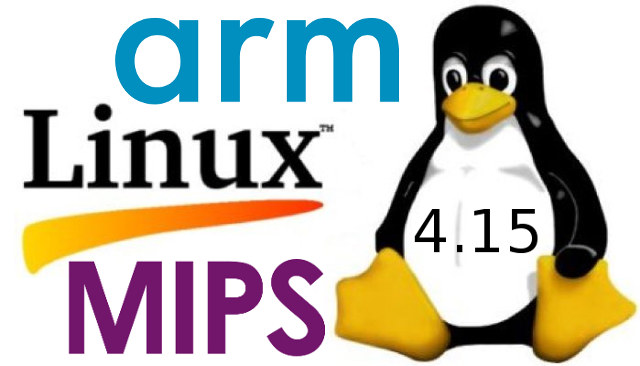Many people interesting in coding and working on projects with the Raspberry Pi just likely connect the board to a monitor, USB keyboard and mouse, and to a power adapter, but if you are interested in having some more compact and portable RasPad tablet kit may be for you. The kit is compatible with Raspberry Pi boards, including the latest Raspberry Pi 3 B+, as well as other Arm/x86 Linux development boards including Tinker Board, LattePanda or BeagleBone Black. [Update: The design likely only works with RPi form factor, so if you use other boards with HDMI output, you may have to leave them out of the housing] RasPad key features: Display – 10.1″ IPS touch screen Video – HDMI port Audio – 2W speaker, audio jack Misc – 3 buttons (volume/brightness +, volume/brightness -, power), micro “USB touch” port Battery – Good for about 3 hours Power Supply – […]
Connect Up to 16 Pi Cameras to Raspberry Pi with IVport V2 Camera Multiplexer Board
The Pi camera is a popular add-on for the Raspberry Pi boards, it connects to the MIPI CSI connector of the board, and offers better performance than USB cameras. But we are now seeing computer vision applications using more than one camera with stereo vision, 360 degree camera setups, and so on. One way would be to connect a Pi camera, and use the USB ports for the extra cameras, but Canerdurmusoglu had another idea, and instead designed IVport V2 Camera Multiplexer Board allowing you to connect up to four official Pi cameras to a single Raspberry Pi board. The maximum number of supported cameras is 16 since several boards can be daisy- chained. IVport V2 works with Raspberry Pi Camera Module V2 (8MP version), and you can switch between cameras using 3 GPIO pins. If I understand correctly that setup does not allows you to use all the cameras […]
BalenaFin is an Industrial Carrier Board for Raspberry Pi CM3L Module Designed for Fleets of Connected Devices
[Update January 2019: Resin.io Project Fin has been renamed to BalenaFin, I have not changed the rest of the article] Resin.io is a both a company and a software platform that includes device, server, and client software to get code securely deployed to a fleet of devices. Devices are setup to run ResinOS, and to deploy you app, you just need to push the code to resin.io build servers, where it will be packaged into containers and delivered to your fleet of boards. So far, resin.io relied on existing hardware platforms like Raspberry Pi 3, BeagleBone Black, or Intel NUCs, but they’ve now decided to launch their first hardware with Project Fin that takes a Raspberry Pi Compute Module 3 Lite, is hardened for field deployment use cases, and adds some of most commonly requested hardware features such as variable supply voltage support, RTC, and cellular connectivity (via mPCIe card). […]
LG Releases webOS Open Source Edition Optimized for Raspberry Pi 3
webOS, originally developed by Palm, is a Linux based multitasking operating systems with support for HTML5 and CSS3. It is now found in most (all?) new LG smart TVs, and the TV manufacturer has decided to expand the adoption of webOS by collaborating with the South Korean government and local startups, and released an open source version , webOS Open Source Edition, available publicly at http://webosose.org. webOS Open Source Edition 1.0 is said to be optimized for the Raspberry Pi 3, and the company provides build instructions on the “setting up” page of the website to build the firmware image, which you can then flash to a micro SD card. The idea is to for a community around the open source version webOS, and let different categories of developers or users contribute to the project: System UI Developers – The System UI is based on Blink and Qt, and developers […]
$35 Raspberry Pi 3 Model B+ Launched with a Faster Processor, 802.11ac WiFi, Gigabit Ethernet, and Optional PoE
The Raspberry Pi Foundation has just introduced a updated version of their popular Raspberry Pi 3 Model B board with a Model B+ that increases the processor clocked up to 1.4 GHz, adds dual-band 802.11ac WiFi, and Bluetooth 4.2, Gigabit Ethernet (via USB 2.0 to Ethernet bridge), as well as support for PoE (Power-over-Ethernet) via an external HAT add-on board. Raspberry Pi 3B+ specifications: SoC – Broadcom BCM2837B0 64-bit ARMv8 quad core Cortex A53 processor @ 1.4GHz with dual core VideoCore IV GPU System Memory – 1GB LPDDR2 Storage – micro SD slot Video & Audio Output – HDMI 1.4 and 4-pole stereo audio and composite video port Connectivity – Gigabit Ethernet (via Microchip LAN7515 USB 2.0 to GbE bridge), maximum throughput 300 Mbps), WiFi 802.11 b/g/n/ac and Bluetooth 4.2 LE (via Cypress CYW43455 based module) USB – 4x USB 2.0 host ports, 1x micro USB port for power […]
BASpi I/O is a Raspberry Pi HAT Expansion Board for Building Automation (BACNet)
BACNet is a data communication protocol for Building Automation and Control Networks that has been developed, supported and maintained by ASHRAE (American Society of Heating, Refrigerating and Air-Conditioning Engineers) Standing Standard Project Committee since 1987, and used as building automation standard in the US, Europe, and more than 30 other countries. It’s used for HVACs, lightings, elevators, fire safety, and other systems used in buildings. It’s also known as ISO 16484-6 standard. I had never heard of it, but this afternoon, I’ve come across Contemporary Controls BASPi I/O, a Raspberry Pi add-on specifically designed for BACNet, and providing 12 physical I/O points including 6 Universal Inputs and 6 Relay Outputs. BASPi I/O specifications and features: BACnet/IP Server – 12 physical points and 24 virtual points BACnet/IP over Ethernet or Wi-Fi Resident Sedona Virtual Machine (SVM) Input/Output — 12-points of physical I/O 6x configurable Universal Inputs: Analog Input, Binary Input, Resistance, […]
How to Use 3G and GPS on Raspberry Pi with ThaiEasyElec 3G HAT Expansion Board
Venus Supply is an embedded systems company based in Bangkok, Thailand that sells products through their ThaiEasyElec website/brand, as well as a act as a local distributor for popular DIY electronics items. I previously tested their ESPino32 ESP32 board, and the company has now send me another of their new product called “3G HAT Expansion for Raspberry Pi” and based on Quectel UC20-G that support 3G and GPS/GLONASS connectivity globally, meaning it should work in any country with 2G or 3G coverage. After listing the specifications, going through unboxing and assembly with a Raspberry Pi 2/3 board, I’ll write some quick start guide to show what I had to do to use GPS and connect to 3G with a Hologram SIM card. 3G HAT Expansion for Raspberry Pi Specifications Quectel UC20-G wireless module supporting Cellular 3G – UMTS @ 800/850/900/1900/2100 MHz 2G – GSM @ 850/900/1800/1900 MHz Data – HSPA+ […]
Linux 4.15 Release – Main Changes, Arm and MIPS Architectures
Linus Torvald has released Linux 4.15 last Sunday: After a release cycle that was unusual in so many (bad) ways, this last week was really pleasant. Quiet and small, and no last-minute panics, just small fixes for various issues. I never got a feeling that I’d need to extend things by yet another week, and 4.15 looks fine to me. Half the changes in the last week were misc driver stuff (gpu, input, networking) with the other half being a mix of networking, core kernel and arch updates (mainly x86). But all of it is tiny. So at least we had one good week. This obviously was not a pleasant release cycle, with the whole meltdown/spectre thing coming in in the middle of the cycle and not really gelling with our normal release cycle. The extra two weeks were obviously mainly due to that whole timing issue. Also, it is […]


